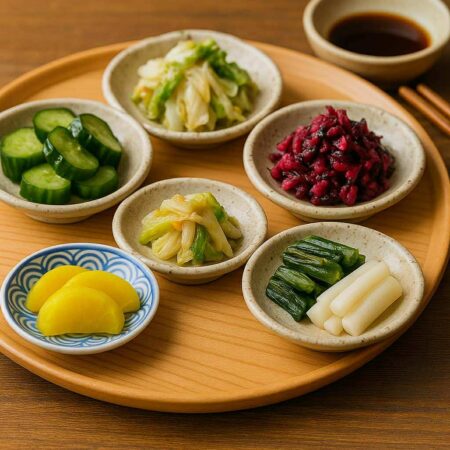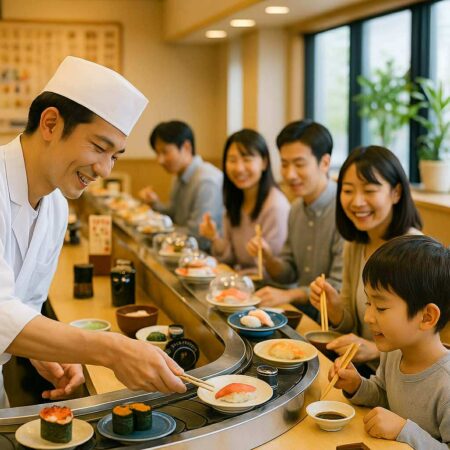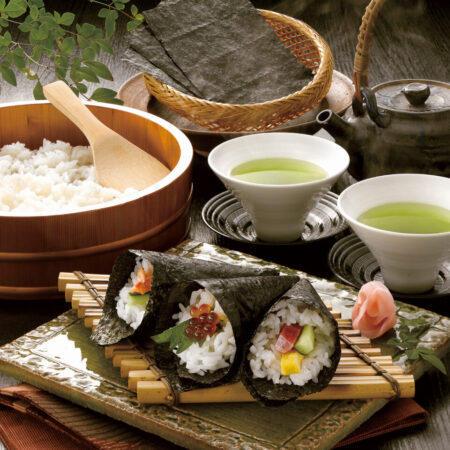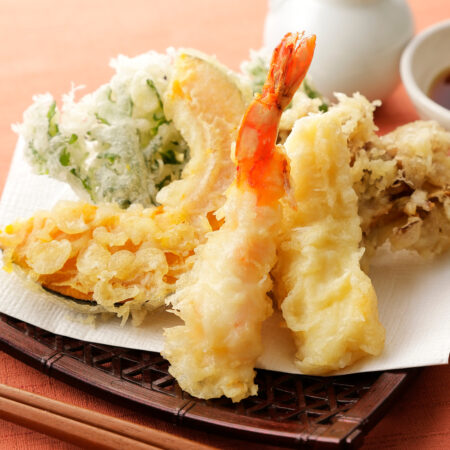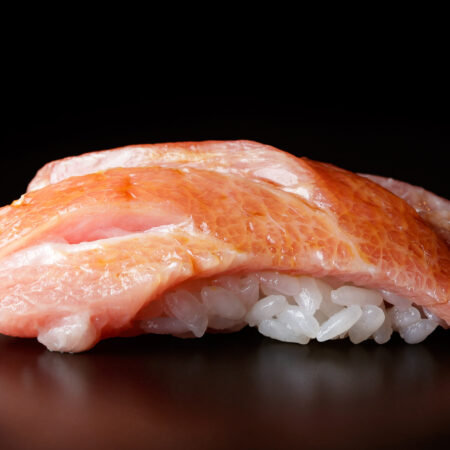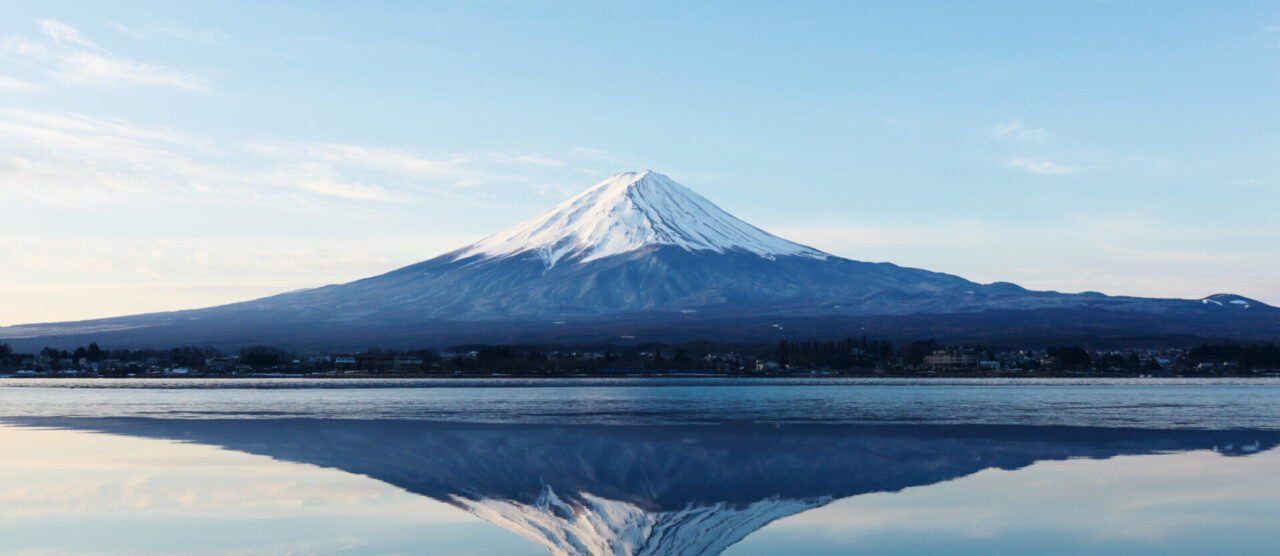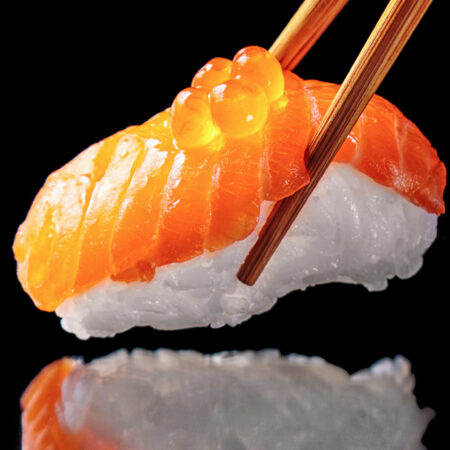The Roots of Sushi: From Edo Fast Food to a Staple of Japanese Cuisine
The origin of sushi traces back to preserved foods in Southeast Asia, where fish was wrapped in rice and salt and left to ferment. This fermentation process lasted for months, sometimes years, after which the fish was consumed as preserved food and the rice discarded. This preservation method is said to have been introduced to Japan during the Heian period. During the Edo period (1603-1868), sushi evolved into the form we know today. In the style known as “Edo-style sushi,” fresh seafood became accessible to the residents of Tokyo (formerly Edo) at affordable prices. Sushi quickly became a part of the city’s food culture, and as long as there was fresh fish, it could be enjoyed year-round. With the introduction of refrigeration technology during the Meiji period (1868-1912), sushi underwent further changes. This technology enabled the long-term preservation of fresh fish and seafood, allowing them to be transported to various regions. As a result, sushi spread throughout Japan, becoming an affordable meal for many. In modern times, sushi is beloved worldwide, with a global community of chefs celebrating its techniques and artistry. However, it’s important not to forget that at its core, sushi emerged from humble fare derived from preserved foods.
Inside the World of Sushi Chefs: The Delicate Art Born from Time and Technique
Becoming a sushi artisan typically requires rigorous training of ten years or more. During this period, apprentices spend their initial years mastering fundamental techniques such as the ideal way to cook rice and precise fish cutting. In the following years, they refine advanced skills, including accurate methods of preparing and preserving various seafood, precise temperature control during sushi preparation, and more. Delicacy is paramount in sushi craftsmanship. For instance, sushi artisans pay meticulous attention to the preparation of the rice, a fundamental component of sushi. To achieve optimal flavor and texture, rice is meticulously washed, cooked with the right amount of water, and combined with unique sushi vinegar. Since rice hardens when it cools, sushi is typically served at a temperature close to body temperature. Similarly, the preparation of the “neta” (toppings for sushi) involves intricate processes. Fish is manually dissected by artisans, with some immediately used for sushi and others aged in refrigerators for several days. Additionally, some sushi toppings are lightly seared to enhance their aroma. Through such delicate processes, each sushi’s flavor and texture are crafted.
Gifts from the Sea: The Wonderful World of Sushi Ingredients
The secret to the delectable taste of Japanese sushi lies in its abundant seafood and unique marine environment. The Kuroshio Current, in particular, plays a significant role. The Kuroshio Current is a warm Pacific Ocean current that flows northward along the east coast of Japan, originating in the Philippine Sea and passing east of Taiwan and Okinawa. This current transports diverse marine life, enriching the marine ecosystem and serving as a source of premium seafood. While Japan boasts rich marine resources throughout the country, certain regions are particularly renowned for specific seafood. For example, Toyama Prefecture is known for firefly squid, while Aomori Prefecture is famous for scallops. Moreover, large fish markets like Tsukiji Market handle fresh seafood gathered from across the nation, and sushi artisans select the finest ingredients from this array. Additionally, the ingredients used in Japanese sushi change with the seasons, reflecting the peak deliciousness of various fish and shellfish. Spring offers new herring and early summer sees sea bream; summer brings eel and sweetfish; autumn offers mackerel and sardines; winter presents crab and flounder. This seasonal approach contributes to the unique flavor, texture, and seasonality of sushi, ensuring its enduring popularity.
Eastern vs Western Sushi: The Subtle Differences
As sushi gained international popularity, its forms, ingredients, and preparation methods diversified across various countries. This has led to different meanings associated with “sushi” in Japan and abroad. Commonly appreciated sushi overseas is often referred to as “roll sushi” or “maki sushi.” In the United States, for instance, variations like California rolls and Philadelphia rolls exist, each featuring unique ingredients that may include avocado, cream cheese, or fried chicken – ingredients not commonly found in traditional Japanese sushi. Furthermore, overseas sushi includes “fusion sushi,” incorporating local ingredients and culinary techniques. In contrast, Japanese sushi emphasizes unwavering consistency and tradition. As previously mentioned, sushi production requires advanced skills and extensive training, with a strict adherence to its production process. Ingredient selection focuses on seasonality and freshness to enhance the natural flavors, aiming to bring out the best in each ingredient. These differences reflect sushi’s adaptation to regional cultures and culinary practices, each offering distinct flavors and allure. By embracing and understanding these differences, you can deepen your appreciation of the diversity and universality inherent in sushi.
Now, Let’s Enjoy Sushi: The Art of Eating and Etiquette
While there’s certain etiquette to be aware of when enjoying sushi, particularly in upscale sushi establishments, it shouldn’t hinder your enjoyment of this delectable cuisine. Understanding how to use soy sauce appropriately and the roles of “gari” (pickled ginger) and “agari” (green tea) can enhance your experience. Remember, manners are important but shouldn’t overshadow the joy of savoring sushi! I hope this overview helps you cultivate a greater appreciation for sushi. Whether you’re a seasoned sushi enthusiast or a curious novice, the world of sushi holds endless discoveries. Embark on a delightful culinary journey through the realm of sushi!




